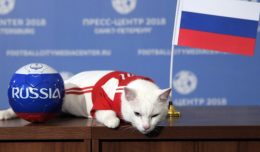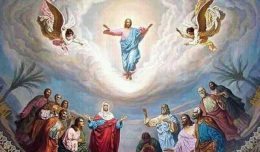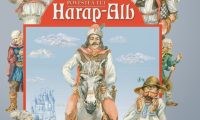nose syndrome in bats
White nose syndrome (WNS) is a syndrome in bats that is caused by geomycosis, infection by the microscopic, psychrophilic mold Geomyces destructans. G. destructans is referred to as a psychrophile because it is an organism that can grow from 5 20 C or 23 68 F. Because of this affinity for low temperatures, psychrophiles are common in the ocean and in refrigerators (Symbiosis: the prentice hall []). Additionally, the hibernacula or hibernation shelters used by bats are often in this temperature range.
Although geomycosis has been confirmed in hibernating bats, G. destructans and white nose syndrome are poorly understood and they remain under much scientific investigation. Fish Wildlife Service, „[] Frequently Asked Questions”; Wibbelt et al).
Bats with white nose syndrome can be distinguished by white fungal growth on the skin of the muzzle, wings, and/or other bodily areas. This white growth consists of conidia (Cryan et al), which are a type of asexual fungal spore (Talaro). A host bat can exhibit other signs of infection, such as flying outside during daylight in winter, when insect prey is scarce and weather inhospitable. This abnormal behavior is perilous for the bat, because it causes the bat to utilize stored fat necessary for hibernation. The result can be emaciation and death. Biologists estimate that at least one million bats have deceased as a result of geomycosis (Buchen; Cryan et al; Puechmaille et al; Slider and Kurta). This is alarming to many biologists, because bats serve important ecological functions, such as pollination and seed dispersal. Insect pest control, however, is probably their most important function. In an article in the periodical Science, Justin G. Boyles et al estimate that „loss of bats in North America could lead to agricultural losses estimated at more than $3.7 billion/year.”
In addition to the observable white conidia, the mold causes physical tissue damage, such as skin lesions and ulcers (Wibbelt et al). In an article published in BMC Biology, zoologists Paul M. destructans. Other conditions they list as beneficial to the mold include the humid portions of hibernacula host bats often favor and the bats’ dense clustering. Fish Wildlife Service reports that, by the end of the 2010 2011 hibernating season, white nose syndrome had been confirmed in bats from sixteen states, including Connecticut, in addition to four Canadian provinces (White nose syndrome: The devastating disease []). The pamphlet further states that G. destructans has been confirmed in three other American states.
The mechanism by which G. destructans causes the bat’s abnormal hibernation arousal behavior has not been defined. In an article in the periodical Nature, Lizzie Buchen describes how some scientists believe the host bat becomes irritated by the mold’s invasion of its hair follicles and oil glands. Cryan et al mention the possibility of dehydration and thirst being the motivation behind the unusual winter arousals of host bats. They mention anecdotal evidence of bats eating snow. Furthermore, some have raised the possibility of a different pathogen being the primary cause of the behavior, although such a pathogen has not been recorded (Buchen).
Although the altered behavior in host bats can lead to death, some researchers propose other pathways by which the mold kills its host. In their article, Cryan et al propose that the mechanism of host mortality is „catastrophic disruption of wing dependent physiological functions.” Such disruption could include termination of local blood circulation, disruption of transpiration in the wings,Custom bobbleheads 13, pulmonary dehydration,Personalized Bobbleheads, heat loss through the wings, and mechanical impairment of flight.
The main potential treatments in discussion are antifungal chemicals or fungicides. However, Buchen notes in her article that no antifungal has yet undergone substantial experimentation. She also describes how one risk of antifungal treatments is possible harm to benign species of cave fungi.
In an article in Northeastern Naturalist, biologists Robin M. Slider and Allen Kurta propose a safer way of experimenting with fungicides while studying hibernating bats, in a way that would be less risky to subterranean ecosystems. Slider and Kurta describe their 2010 investigation of an abandoned quarry or open excavation in Michigan. The quarry was colonized by 64 bats, including at least three species. This type of abandoned quarry, when used as a synthetic hibernaculum by bats, is called a surge tunnel or reclaim tunnel. Slider and Kurta propose that surge tunnels could be modified to be more suitable hibernacula for bats and that researchers could experiment with fungicides on bats in surge tunnels, without posing risk to natural cave wildlife. They also suggest that modification of existent reclaim tunnels would be cheaper than creation of new artificial hibernacula.
Vaccination of bats is being considered, but Buchen notes the impracticality of vaccinating a large number of individual bats. Fish and Wildlife Service, is additionally quoted saying that a vaccine would take „years of research,” a timeframe that scientists likely can’t afford.
In a strange twist, it was discovered that G. destructans occurs in European bats, but does so without causing white nose syndrome (Buchen; Wibbelt et al). For instance, the mold has been visually and genetically recorded in bats from Germany, Hungary, and Switzerland (Wibbelt et al), as well as France (Puechmaille et al), but apparently without causing host death. It has been hypothesized that G. destructans has coevolved with European bats, which have become immune to it or made behavioral adaptations to counteract it. For example, American bats in affected regions were previously known to hibernate in huge colonies of 1,000 50,000, while hibernating European bat colonies have been rarely known to exceed 1,000 individuals (Wibbelt et al). The lessened host density per hibernaculum could be an adaptation to decrease transmission.
Another hypothesis,Custom bobbleheads,Custom bobbleheads 21, this one regarding the mode of transmission,bobbleheads 58, is that humans have caused or facilitated dispersal, by conducting fungal spores between hibernacula while spelunking/caving, the often recreational exploration of caves (Wibbelt et al).
Research by biologists Sunanda S. Rajkumar et al somewhat supports this hypothesis. In a 2011 study, Rajkumar et al genetically analyzed sixteen isolates of G. destructans recovered from host bats from seven New York counties and one adjoining Vermont county, during 2008 2010. They found that the isolates possessed identical genotypes,bobbleheads, that is, matching versions of the same gene or group of genes. This result evidences the possibility that the isolates originated from a singular organism. Another piece of evidence they cite is the fact that, contrary to the genetic similarity of the samples of G. destructans, „several fungi with geographic distributions similar to [] [G. destructans] have shown major genetic variation among strains.” Additionally, they relate that G. destructans is known only to use asexual reproduction, which tends to limit genetic variability, unlike the profuse variability caused by sexual reproduction. If it were true that the outbreak had a common source in one organism, then it is probable that the source was spread by spelunkers. Yet they note that animals might also have acted as vectors in the rapid dispersal of the strain, such as bats themselves migrating to different hibernacula.
Consequent to that finding and other opinions (Rajkumar et al), on September 2, 2010, Gregory E. Fish Wildlife Service, „National Wildlife Refuge System closes caves []”).
If a person witnesses unusual bat behavior or symptoms, the WNS site of the wildlife service recommends reporting the incident to one’s state natural resource agency. The site describes abnormal bat behaviors as including flight during daylight, roosting outside, roosting during daylight, and difficulty flying (What can you do to help?). In Connecticut, the relevant agency is the Connecticut Department of Energy and Environmental Protection, whose Web site is here. Clicking the „Contact Us” hyperlink displays the department’s contact information. Boyles; Paul M. Cryan; Gary F. McCracken; Thomas H. Kunz. Web page: Economic Importance of Bats in Agriculture. Web site: Science. Date: April 2011. Institution: American Association for the Advancement of Science (AAAS). Date of access: December 26, 2011. Article: Disease epidemic killing only US bats. Periodical: Nature. Volume: 463. Issue: 7278. Date: January 14, 2010. Pages: 144 145. Database: ProQuest Biology Journals. Library: Jean Burr Smith Library. Date of access: December 11, 2011. Rajkumar, Xiaojiang Li, Robert J. Rudd, Joseph C. Okoniewski, Jianping Xu, Sudha Chaturvedi, Vishnu Chaturvedi. Article: Clonal Genotype of Geomyces destructans among Bats with White Nose Syndrome, New York, USA. Periodical: Emerging Infectious Diseases. Volume: 17. Issue: 7. Date: July 2011. Pages: 1273 1276. Database: Academic Search Premier. Library: Jean Burr Smith Library. Date of access: December 11, 2011. Book: Foundations in Microbiology: Basic Principles. Edition: 6. Place of publication: New York, New York. Publisher: McGraw Hill. Fish Wildlife Service. Fish Wildlife Service. Date: December 17, 2010. Institution: United States Department of the Interior, United States Fish Wildlife Service. Date of access: December 18, 2011. Cryan; David S. Blehert. Article: White Nose Syndrome Fungus (Geomyces destructans) in Bats, Europe. Periodical: Emerging Infectious Diseases. Volume: 16. Issue: 8. Date: August 2010. Pages: 1237 1243. Database: Academic Search Premier. Library: Jean Burr Smith Library. Date of access: December 11, 2011.
















